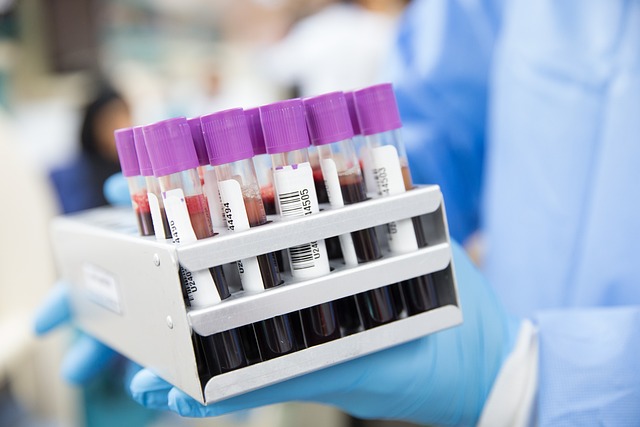Testosterone, vital for male health, is balanced through a testosterone blood test. This test measures total levels, aiding in diagnosing conditions like hypogonadism or hypergonadism. Accurate results require fasting and understanding normal ranges (300-1000 ng/dL). Healthcare providers interpret tests alongside symptoms to guide appropriate treatment.
Diagnosing hormone imbalances accurately is key to effective treatment. One reliable tool in this process is the testosterone blood test, which measures crucial hormone levels. Understanding testosterone’s role in the body and how it interacts with other hormones is essential for interpreting results accurately. This article guides you through the testosterone blood test process, from understanding its function to navigating and interpreting the results, empowering you to take charge of your health.
- Understanding Testosterone and Its Role in Hormone Imbalances
- Navigating the Testosterone Blood Test: What to Expect and Interpret Results
Understanding Testosterone and Its Role in Hormone Imbalances
Testosterone is a vital hormone that plays a significant role in maintaining overall health and well-being, especially in men. It is primarily produced by the testes and has various essential functions. One of its crucial roles is regulating other hormones and influencing sexual development and reproductive function. A balanced testosterone level is critical for muscle mass, bone density, energy levels, and even mood regulation.
When there is an imbalance in testosterone, it can lead to a range of health issues. A reliable testosterone blood test is a diagnostic tool that helps identify such imbalances. By measuring the hormone’s concentration in the blood, medical professionals can determine if a patient has low (hypogonadism) or high (hypergonadism) testosterone levels, which are indicative of potential underlying conditions and can guide appropriate treatment.
Navigating the Testosterone Blood Test: What to Expect and Interpret Results
Navigating the testosterone blood test involves understanding what to expect and how to interpret results accurately. The test typically measures the level of total testosterone in your blood, which provides a snapshot of your hormone balance at the time of collection. It’s crucial to follow the instructions provided by your healthcare provider for optimal accuracy. Fasting for 8–12 hours before the test is usually recommended to ensure consistent readings.
When interpreting results, remember that normal ranges can vary slightly between labs and age groups. For men, a typical reference range is approximately 300-1000 nanograms per deciliter (ng/dL). Values below this range might suggest low testosterone levels (hypogonadism), while elevated levels could indicate potential issues like tumors or other health problems. Your healthcare provider will consider various factors and symptoms to help diagnose hormone imbalances based on the test results.
A reliable testosterone blood test is a powerful tool for diagnosing hormone imbalances, providing crucial insights into an individual’s hormonal health. By understanding the role of testosterone and navigating the testing process effectively, individuals can take control of their well-being. This simple procedure offers a clear direction for treatment and management, ensuring optimal hormone levels for overall health and vitality.
